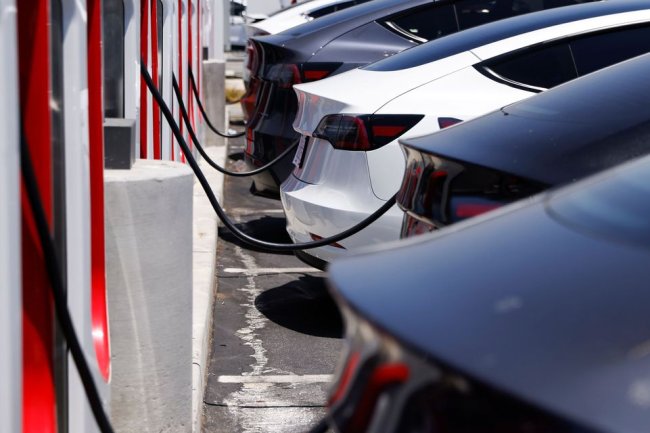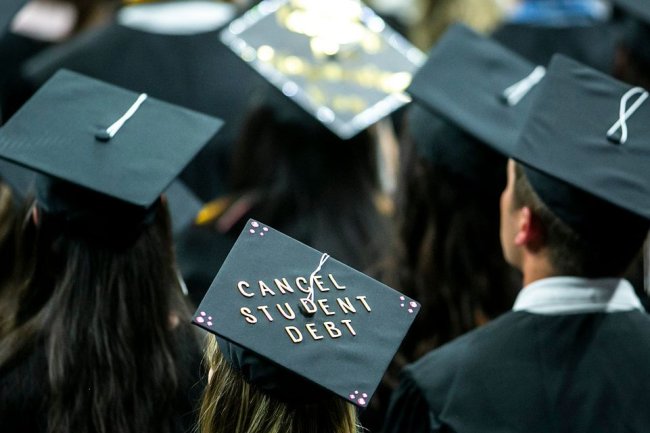Ukraine’s Ammunition Chief Battles to Boost Production
Former head of state railway company fights to bring Ukraine’s defense industry up to speed as war with Russia drags on Oleksandr Kamyshin says it will take years for Ukraine to meet its current level of ammunition demand. Joseph Sywenkyj for The Wall Street Journal Joseph Sywenkyj for The Wall Street Journal By Isabel Coles Updated Aug. 7, 2023 12:03 am ET KYIV, Ukraine—Like any good boss, Oleksandr Kamyshin keeps on top of production numbers for the factories he oversees. But for Kamyshin, Ukraine’s minister of strategic industries, it is a matter of life and death: The figures that land on his desk every morning show ammunition output at dozens of Ukrainian factories. Th


KYIV, Ukraine—Like any good boss, Oleksandr Kamyshin keeps on top of production numbers for the factories he oversees. But for Kamyshin, Ukraine’s minister of strategic industries, it is a matter of life and death: The figures that land on his desk every morning show ammunition output at dozens of Ukrainian factories.
The availability of artillery shells could prove decisive in the next phase of the war with Russia, and the 39-year-old is in charge of boosting Ukraine’s production. Western stocks have been run down by nearly 18 months of fighting, and the U.S. and its allies are struggling to increase production.
Any dip in output and Kamyshin immediately gets on the phone with the factory manager to find out what went wrong. “All of them are on a direct line with me,” he said in an interview.
Ukraine’s sprawling arms industry fell into decline after the country gained independence from the Soviet Union in 1991. Kamyshin says it is still hamstrung by unproductive practices rooted in the Soviet era. “It’s a complete change of culture,” he said.

Ukrainian military patches hang alongside emblems of state agencies and NGOs in Oleksandr Kamyshin’s office.
Photo: Joseph Sywenkyj for The Wall Street Journal
Kamyshin has delivered before. As head of Ukraine’s state railway company, he kept goods and people flowing after the country’s airspace was closed in the early days of the invasion. Ukrzaliznytsia’s trains ferried civilians and foreign dignitaries including President Biden, who traveled to Kyiv last year on a train dubbed Rail Force One.
But bringing Ukraine’s defense industry up to speed in the middle of a war is an even bigger challenge.
Four months into the job, Kamyshin’s efforts have yielded results. In July, Ukraine produced more than twice as much mortar and artillery ammunition as it did during the whole of 2022, he said.
That, however, is less an indication of how much Ukraine is producing now than how little it was before, Kamyshin acknowledged. The numbers are secret, but it will be years before Ukraine can produce enough ammunition to meet current needs, he said. “I’m climbing Kilimanjaro,” Kamyshin said. “It’s like the end of the first day.”
For now Kyiv is dependent on Western countries that are also struggling to increase production after running down their own ammunition stockpiles. The U.S. recently provided Kyiv with cluster munitions to help alleviate a looming shortage as Ukrainian forces struggle to break through Russian defenses in the south of the country. European states, too, struck a deal last month mobilizing half a billion euros to boost ammunition production for Ukraine—and for themselves.

State arms maker Ukroboronprom, based in Kyiv, has had to boost output while facing Russian attacks.
Photo: Gleb Garanich/Reuters
The scramble for ammunition reflects how ill-prepared Ukraine and its allies were to sustain an intense and protracted land war.
On the battlefield, Ukraine has held its own against a much bigger army. But in the vital struggle to support its combatants with arms and ammunition, it is far behind. Russia—the world’s second-largest arms exporter—has continued churning out military hardware.
Ukraine was once a key center of the Soviet defense industry, but many of the arms factories it inherited upon independence in 1991 fell into decline over the ensuing decades. In the year before Russia’s invasion, Ukraine produced no ammunition at all, according to Kamyshin.
Western allies stepped in as Ukraine burned through its ammunition stockpiles during the first months of the war, while local defense companies struggled to increase production under Russian bombardment.
The war was a year old by the time Kamyshin was appointed as chief of the defense industry, but to him it felt like the very first days of the invasion. “Being in charge of a large, crucial, critical structure for your country for the war when nothing works,” he said.

Ukrainian forces in the eastern Donetsk region have been burning through stocks of shells at a rapid rate.
Photo: Michael Brochstein/Zuma Press

Members of the repair battalion of the 3rd Tank Brigade work on an armored vehicle at a shop in the Kharkiv region earlier this year.
Photo: sergey bobok/Agence France-Presse/Getty Images
Ukraine’s President
Volodymyr Zelensky tapped him as minister in March as the country geared up for a counteroffensive to retake territory occupied by Russia.Kamyshin’s immediate priority was ammunition, which Ukrainian forces are consuming at a rate of about 90,000 shells a month, according to U.S. officials. To spur production, he visited dozens of factories, which have been dispersed across the country and abroad to make them harder for Russia to strike.
It surprised Kamyshin to find that some factories weren’t working round the clock or over the weekend, he said. “In the second year of the war everyone should be working 24/7.”
His new team of like-minded deputies includes a new head of state-owned weapons manufacturer Ukroboronprom. “These people know that you can’t say ‘Let’s talk Monday,’ ” he said.
Storm Shadow missiles equip Ukraine’s counteroffensive with the ability to hit Russian targets far behind the frontlines. The WSJ explores how the weapon works and why it’s forcing Moscow to rethink its logistics. Photo Illustration: Nayon Cho (Published Aug. 1)
Ukraine isn’t the first country whose industry was unprepared at the start of a war, prompting a sudden pivot involving executives from civilian sectors. In the U.S. at the start of both world wars, successful and often well-paid private-sector business leaders volunteered to help government mobilization efforts, becoming known as dollar-a-year men because regulations forbid official work for no pay.
Taking a similar approach of borrowing from the private sector in Ukraine, Kamyshin has extended defense companies’ contracts to year-end—rather than monthly—and brought in more firms to gear production toward the defense industry. “It’s not rocket science,” he said.
By the end of the year, Ukraine will be producing NATO-standard 155mm ammunition as well as the Soviet 152mm and 122mm calibers already produced.
When Winston Churchill became British prime minister in May 1940 as Nazi forces overran France, he appointed newspaper magnate Max Aitken, Lord Beaverbrook, to the newly created position of minister of aircraft production. The frequently intimidating businessman pushed factories to triple fighter-plane production over four months, giving the Royal Air Force enough aircraft to prevail in the Battle of Britain during that summer.

During World War II, newspaper publisher Max Aitken was chosen to oversee the U.K.’s aircraft production.
Photo: Getty Images
Kamyshin hopes other companies will follow German munitions maker Rheinmetall, BAE Systems and Turkey’s Baykar, which are already moving to open plants in Ukraine. Several U.S. arms manufacturers have expressed interest, Kamyshin said. In return for the risks of setting up shop in a war zone, firms get the opportunity to test and develop weapons on the frontiers of modern warfare, Kamyshin said.
The U.S. has said it is looking to learn from Ukraine about how to conduct drone warfare. The war has witnessed the greatest use of aerial drones and counterdrone technology in any military conflict. Both sides are employing a full range of offensive and defensive unmanned aerial vehicles and electronic warfare measures aimed at thwarting them.
Beyond that, Kamyshin said, Ukraine’s defense industry could serve as an engine for economic recovery and underwrite its security when the war is over. “We have an ambition to be the arsenal of the free world,” Kamyshin said, invoking the words of Franklin D. Roosevelt during World War II.
—Daniel Michaels contributed to this article.
Write to Isabel Coles at [email protected]
What's Your Reaction?













